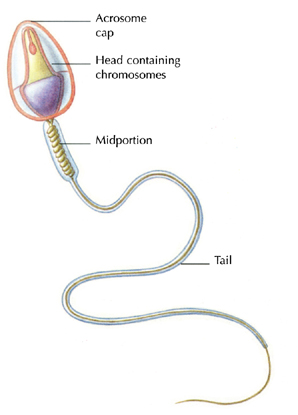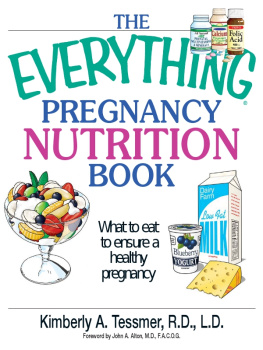The information and advice presented in this book should not substitute for the advice of your personal physician or other trained healthcare professionals. You are advised to consult with healthcare professionals with regard to all matters that may require medical attention or diagnosis and to check with a physician before administering or undertaking any course of treatment.
All rights reserved.
Published in the United States by Ballantine Books, an imprint of The Random House Publishing Group, a division of
Random House, Inc., New York.
BALLANTINE and colophon are registered trademarks of Random House, Inc.
Originally published in Great Britain by Carroll & Brown Publishers Limited, London.
The Library of Congress Cataloging-in-Publication Data is available upon request.
Introduction
The approximately 280 days of a normal pregnancy are among the most memorable in a womans life. From the minute she finds out that she is expecting, a pregnant woman becomes eager to know everything that will ensure an enjoyable pregnancy, a safe delivery, and a healthy baby.
Not only will this book help you do all that it will also make you aware of how your baby develops, what he can do, and how he looks while youre waiting for him to be born.
You will find on each page of the diary, practical information on all aspects of pregnancy, labor, and delivery from what you should eat, how you should exercise, the lifestyle choices you should make, and what you can do to ease any complaints, through to choices in childbirth, the different methods of pain relief during labor, and what happens during delivery. And, for those mothers whose babies dont arrive on their estimated dates of delivery, there are two extra weeks of useful information. Though the book is not a definitive guide to pregnancy, it will give you lots of useful information in an easily digestible form.

During the early weeks of development, the progress of your growing baby is illustrated by artwork, which more clearly shows the minute changes taking place. Once these weeks have passed, alongside of the daily advice to the mother, you will find an ultrasound image of a baby of the appropriate age and an explanation of his stage of development or behavior. Im sure you will be delighted by the great range of expressions and actions of which babies are capable. You can be sure that your baby is looking very similar to, and doing the same things as, the babies shown.
Of course, not all babies develop at exactly the same rate and there are differences in length and weight, but doctors are generally agreed about the normal course of development. Therefore, in each of the pregnancy weeks, you can expect your baby to have acquired the abilities and appearance as cataloged over the course of the days of that week and to be approximately the length and weight as expressed in the weeks vital statistics.

There is a difference, however, between the duration of pregnancy and that of gestation. Because pregnancy is dated from your last menstrual period and conception usually happens two weeks later, doctors count the weeks of pregnancy 14 days in advance of your babys actual gestation. Therefore, during the 27th week of pregnancy, for example, your baby will be 24 weeks gestational age until the end of the week, when he attains his 25th week.


day
YOUR MENSTRUAL CYCLE
Your pregnancy is dated from the first day of your last menstrual cycle. The cycle starts on the first day of menstrual bleeding and lasts for around 28 days. At about day five of your cycle an egg (ovum) starts to mature inside a fluid-filled sac (follicle) in one of your two ovaries and the lining of the uterus becomes thicker in preparation for the implantation of the egg if it becomes fertilized. At around day 14 ovulation takes place. This is when the egg is released into the Fallopian tube ready to be fertilized. The egg remains ready for fertilization for between 12 and 24 hours. If it is left unfertilized it is shed, along with the lining of the uterus (endometrium), during the next menstrual period and the whole process begins again. If fertilization takes place, you will be four weeks pregnant by the time your next menstrual cycle is due to start again.

day
SPERM
For fertilization to take place a sperm has to penetrate and fuse with the nucleus of the egg. Sperm are manufactured in the testes at a rate of about 125 million each day. Each sperm is made up of three parts: a head which contains the nucleus where the 23 chromosomes are stored; an acrosome cap, which enables the sperm to penetrate the egg, and a tail which allows it to swim at a rate of about of an inch (3 mm) every minute. Immature sperm, known as spermatids, are stored in a long coiled tube (epididymis), which is attached to the testes. Once they have matured, they move on to the vas deferens, a tube that connects the epididymis to an ejaculatory duct. The whole process takes between 70 and 100 days. Mature sperm are either ejaculated during sex in a milky fluid called semen, or reabsorbed into the body.

day
GENES
Although your baby inherits 50 percent of her genes from you and 50 percent from your partner, your genes were inherited from your parents, so approximately a quarter of all your childs genes are also inherited from each of four grandparents. Genes are made up of DNA and are contained in structures known as chromosomes. At the time of conception your baby receives 46 chromosomes which exist in 23 pairs each chromosome contains a copy of a gene from you and a matching copy from your partner. It is the combination of these genes that influence how your baby will look they dictate hair and eye color and the shape and size of the nose and other external characteristics. Genes also provide the instructions which enable the fertilized egg to develop into a baby and are the blueprint for all the bodys functions, now and in the future.

















